When it comes to the world of creepy-crawly creatures, snakes and spiders often top the list of things that send shivers down our spines. Some species possess such bizarre, spine-tingling features that they appear to have been plucked straight out of a horror movie. From venomous fangs to eerie shapes, these creatures can be both fascinating and fear-inducing.
1. The Spine-Chilling King Cobra
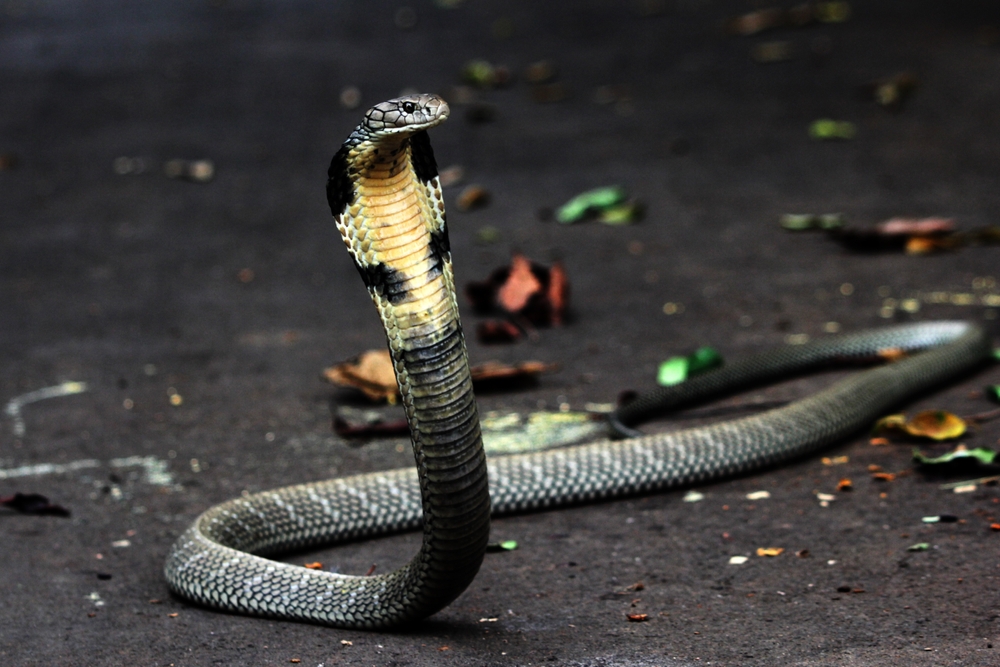
The king cobra is a snake that commands both awe and fear, primarily due to its massive size and potent venom. Growing up to 18 feet long, this serpent is the world’s longest venomous snake, making it a formidable predator. Its hood, which expands when threatened, gives it an even more intimidating appearance, as if it’s wearing a crown of terror. Found in the forests of Southeast Asia, the king cobra feasts on other snakes, earning its regal name. According to National Geographic, its venom is potent enough to kill an elephant or 20 humans with a single bite. However, despite its fearsome reputation, it generally avoids humans unless provoked.
What makes the king cobra truly fascinating is its intelligence and complex behavior. Unlike other snakes, the king cobra constructs nests and guards its eggs fiercely, displaying a level of parental care that’s unusual in reptiles. When threatened, it can lift up to a third of its body off the ground—a truly terrifying sight when faced with a fully grown king cobra. Its hiss is lower in pitch compared to other snakes, sounding eerily like a growl. While encounters with humans are rare, this majestic serpent leaves a lasting impression on anyone who crosses its path. The king cobra is a true testament to nature’s ability to create creatures that inspire both dread and admiration.
2. The Nightmarish Goliath Bird-Eating Spider
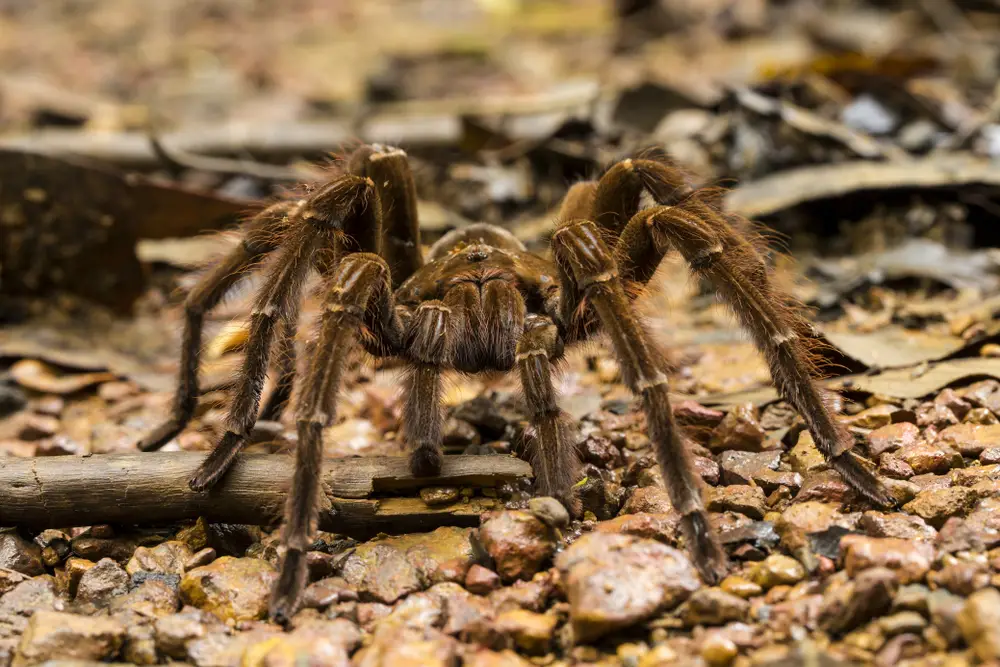
The Goliath bird-eating spider is the stuff of nightmares for arachnophobes due to its enormous size and menacing appearance. As the largest spider in the world by mass, it can weigh over 6 ounces and have a leg span of up to 11 inches. Despite its name, it rarely preys on birds; instead, it feasts on insects, rodents, and even small reptiles. Its fangs are formidable, measuring nearly an inch long, capable of injecting venom to subdue its prey. According to Smithsonian’s National Zoo, the venom isn’t lethal to humans, but the spider’s sheer size can be quite intimidating.
The Goliath bird-eating spider resides in the rainforests of South America, where it constructs burrows lined with silk to ambush unsuspecting prey. When threatened, it has an unusual defense mechanism: it rubs its legs against its abdomen to release a cloud of tiny, barbed hairs that can irritate the eyes and skin. This defense, combined with its massive size, makes it a creature that looks like it walked straight out of a horror film. While it may be the source of countless nightmares, the Goliath bird-eating spider is a fascinating example of the diversity and wonder of the arachnid world.
3. The Sinister Brazilian Wandering Spider
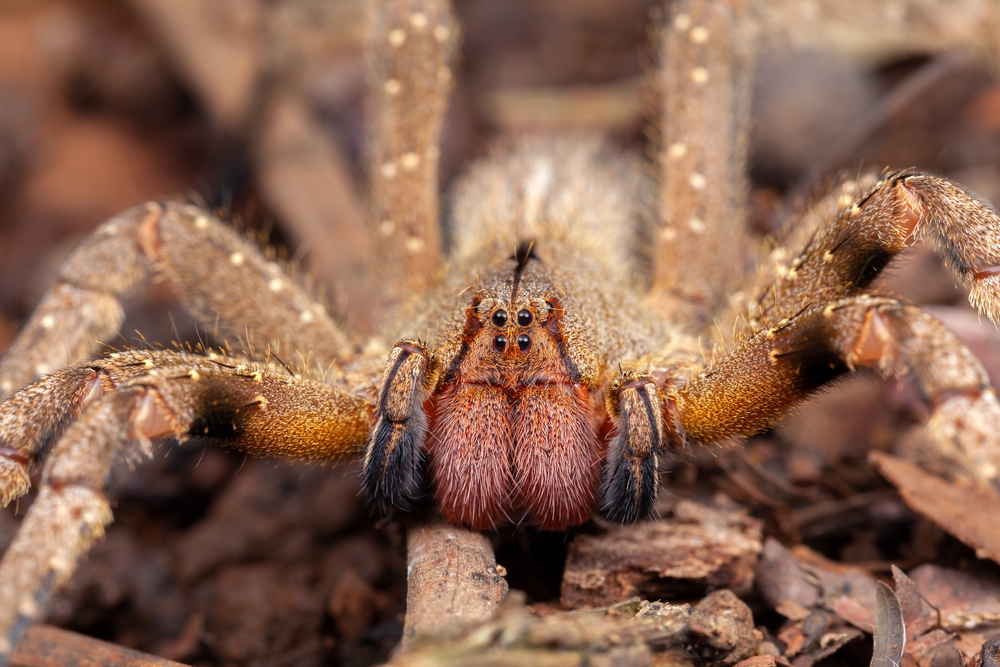
The Brazilian wandering spider is notorious for its aggressive temperament and powerful venom, earning it the nickname of the “armed spider.” Unlike other spiders that construct webs, this arachnid roams the jungle floor at night in search of prey, adding to its unpredictable and fearsome reputation. With a leg span of up to 5 inches, it’s not the largest spider, but it is one of the most dangerous. Its venom contains a potent neurotoxin that can cause intense pain and even lead to death if untreated. According to Live Science, it holds the Guinness World Record for the world’s most venomous spider.
During the day, the Brazilian wandering spider hides in banana plants and other vegetation, which sometimes brings it into contact with humans. When threatened, it raises its front legs in a defensive posture, revealing bright red hairs on its underside as a warning. Despite its fearsome reputation, fatalities from its bites are rare due to the availability of antivenom. This spider’s aggressive nature and potent venom make it a true terror of the tropical forests in South America. Its presence alone can send a chill down one’s spine, and it’s no wonder it looks like it belongs in a horror movie.
4. The Mysterious Gaboon Viper
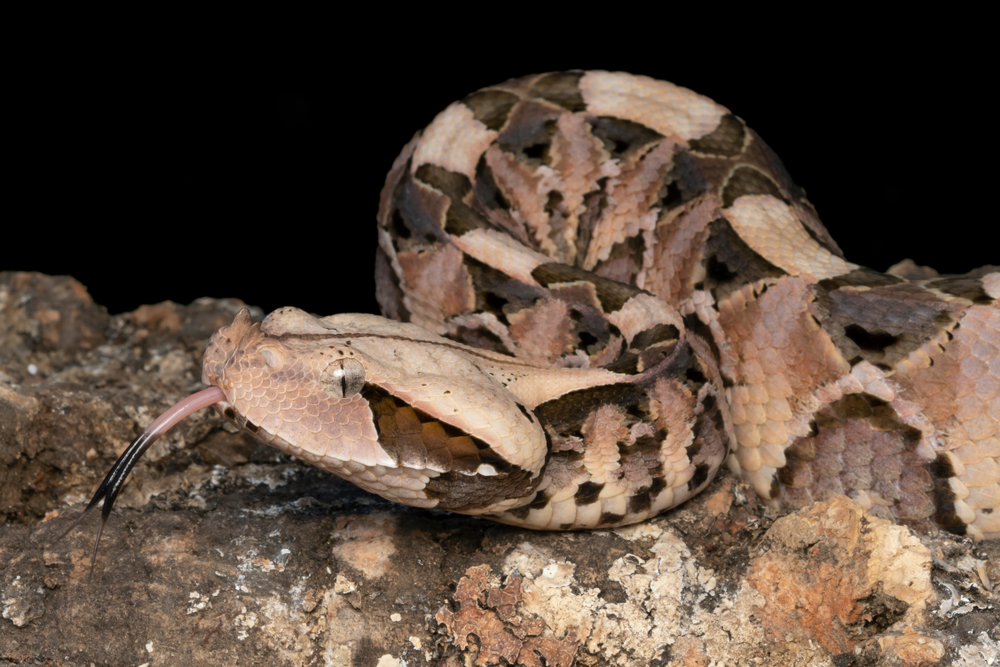
With its cryptic coloration and enormous fangs, the Gaboon viper is a snake that seems tailor-made for a horror movie role. Native to the rainforests and savannas of sub-Saharan Africa, this viper relies on its incredible camouflage to ambush prey such as birds and rodents. Its distinctive pattern of brown, yellow, and purple allows it to blend seamlessly with the forest floor, making it almost invisible to the untrained eye. But what truly sets the Gaboon viper apart are its fangs, which can reach a staggering 2 inches in length—the longest of any snake. These fangs are designed to deliver a powerful venom that subdues its prey almost instantly.
Despite its lethal capabilities, the Gaboon viper is surprisingly docile, often opting to remain motionless rather than attack when encountered by humans. It seldom bites unless provoked, and even then, it frequently delivers “dry bites” without injecting venom. This placid nature, combined with its deadly arsenal, makes it a creature of paradoxical beauty and menace. Its unique features and enigmatic behavior captivate herpetologists and curious explorers alike. The Gaboon viper is a testament to the complexity of nature, proving that sometimes the most terrifying creatures are also the most misunderstood.
5. The Eerie Trapdoor Spider
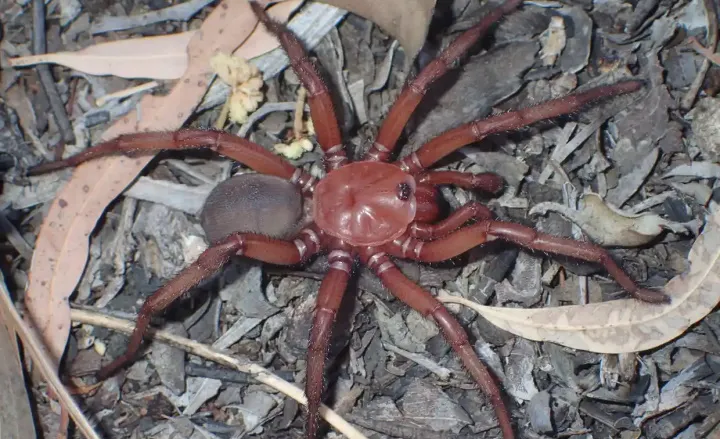
The trapdoor spider is a master of stealth and surprise, lurking beneath the forest floor to ambush unsuspecting prey. Found in warm climates around the world, these spiders construct burrows with cleverly concealed doors made of soil and silk. When prey approaches, the trapdoor spider bursts from its hiding place with astonishing speed, seizing its victim in a matter of seconds. This cryptic lifestyle has earned the trapdoor spider a reputation as a fearsome predator in the insect world. Its hairy body and quick movements only add to its eerie allure.
Though its bite is not harmful to humans, the trapdoor spider’s sudden appearance can be startling to those who happen upon it. Its ability to remain hidden for long periods and then strike with precision makes it a fascinating subject of study for entomologists. The trapdoor spider’s unique hunting strategy showcases the diverse adaptations of arachnids in their quest for survival. Its combination of stealth, speed, and surprise make the trapdoor spider a creature that seems tailor-made for the horror genre. This unassuming predator is a reminder that nature’s most effective hunters are often the ones we least expect.
6. The Terrifying Black Mamba
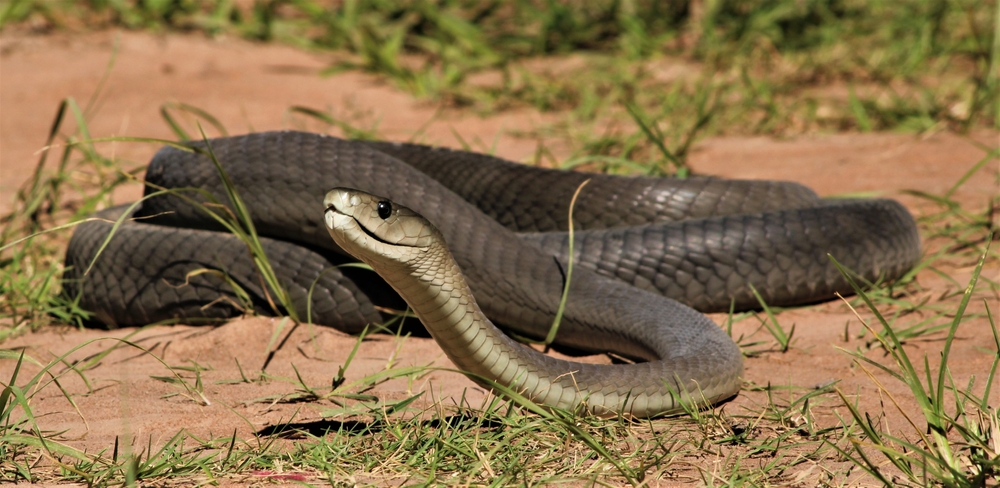
The black mamba is often regarded as one of the most feared snakes in the world due to its lethal bite and aggressive nature. Native to sub-Saharan Africa, this snake can travel at speeds of up to 12 miles per hour, making it the fastest land snake. With its slender body and length of up to 14 feet, the black mamba can deliver multiple bites in quick succession, injecting a potent neurotoxic venom. This venom can cause respiratory failure and death within hours if left untreated, though antivenom is available. The black mamba’s reputation is further cemented by its ability to raise a significant portion of its body off the ground when striking.
Despite its fearsome image, the black mamba is typically shy and will avoid humans whenever possible. It will only attack if cornered or threatened, preferring to escape rather than confront. This elusive nature adds to its mystique, as sightings are rare, and encounters are often brief. The black mamba’s legendary status as a “killer” snake makes it a fascinating yet terrifying subject for both researchers and thrill-seekers. Its combination of speed, agility, and lethal potential ensures its place as a creature that perfectly embodies the horror movie archetype.
7. The Creepy Sydney Funnel-Web Spider
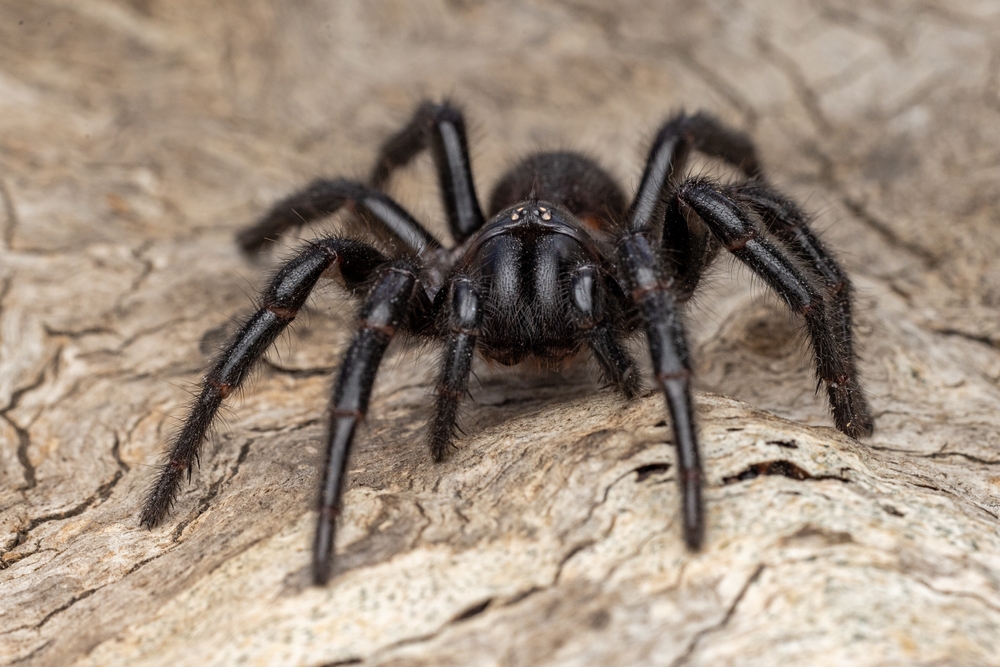
The Sydney funnel-web spider is a creature that strikes fear into the hearts of Australians and arachnophobes worldwide. With its glossy black body and menacing fangs, this spider is notorious for its highly toxic bite. The venom of the Sydney funnel-web spider can cause severe symptoms in humans, including muscle spasms and difficulty breathing, though fatalities are rare thanks to effective antivenom. What sets this spider apart is its aggressive nature; it will readily attack and deliver multiple bites if threatened.
Found in New South Wales, Australia, this spider favors moist environments such as gardens and forests. Its underground burrow is lined with silk, with a funnel-shaped entrance that gives the spider its name. When prey or an intruder approaches, the Sydney funnel-web spider is quick to respond, emerging from its burrow with a threatening display. This combination of aggression, potent venom, and unsettling appearance makes it a true creature of nightmares. For many, the Sydney funnel-web spider remains a symbol of nature’s ability to produce fearsome predators that rival those found in horror films.
8. The Enigmatic Eyelash Viper
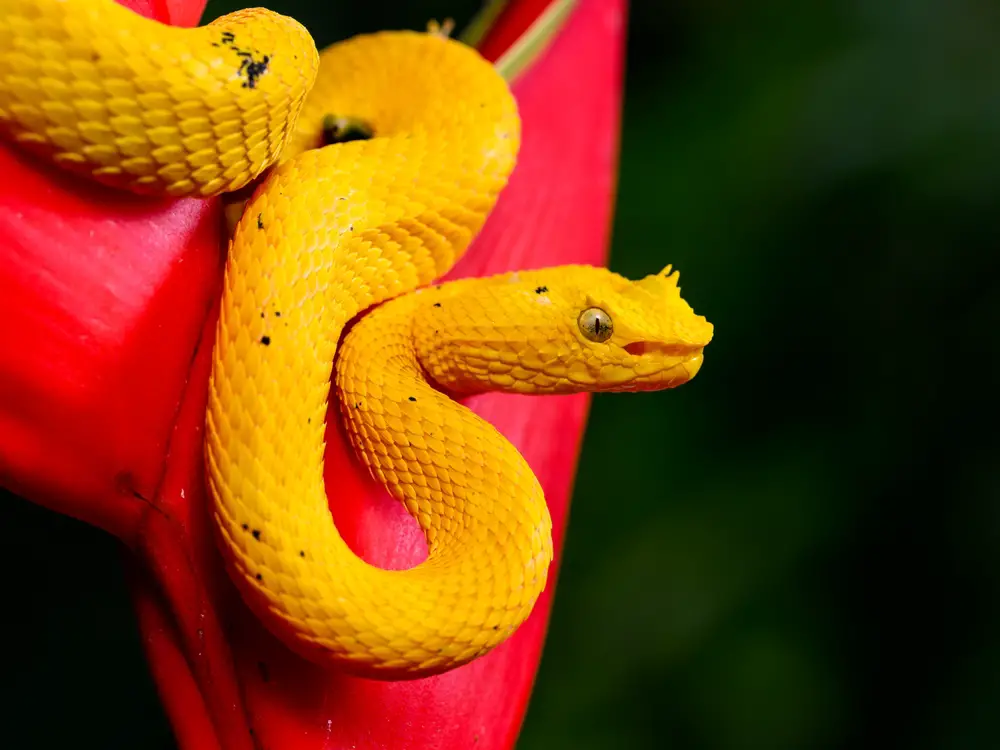
The eyelash viper is a snake that captivates with its striking colors and unusual physical features, making it a standout among terrifying creatures. Named for the unique, scale-like projections above its eyes, this viper has a seemingly otherworldly appearance. Found in Central and South America, the eyelash viper comes in a variety of vibrant hues, including yellow, green, and pink, which allow it to blend in with its surroundings. This camouflage, combined with its small size, makes it an effective ambush predator.
Despite its petite stature, the eyelash viper’s venom can cause significant harm to its prey, primarily small birds and frogs. While its bite is rarely fatal to humans, it can still cause severe pain and tissue damage if left untreated. The snake’s enigmatic presence and remarkable adaptations make it a favorite among reptile enthusiasts and photographers. Its delicate beauty, paired with its lethal potential, creates a captivating contrast that is both enchanting and unsettling. The eyelash viper’s exotic allure and cryptic behavior ensure its place as a creature that seems perfectly suited for the silver screen.
9. The Ghostly Hunstman Spider
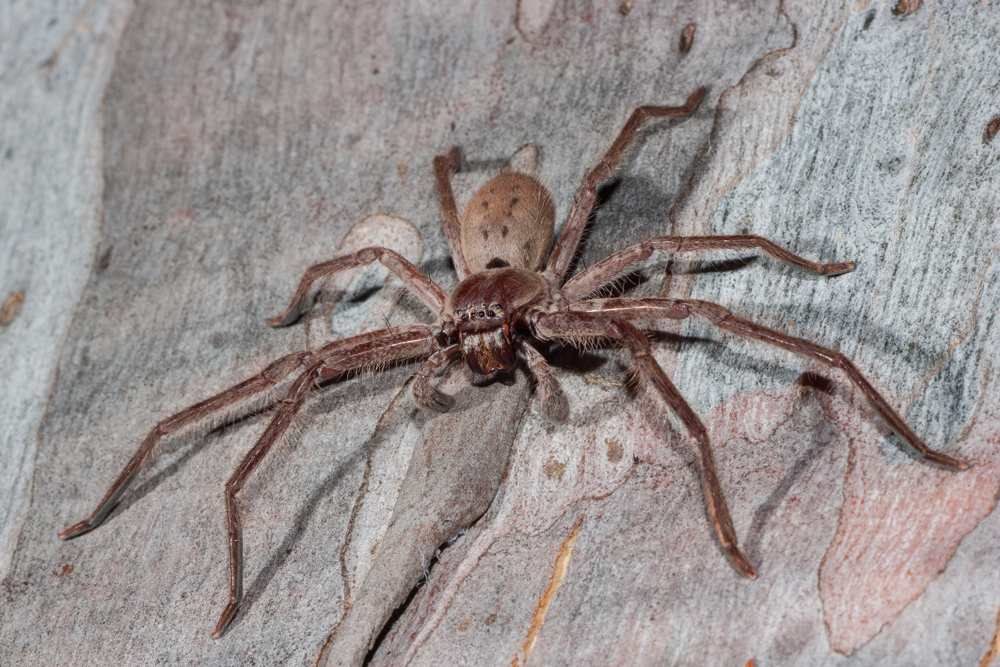
With its long legs and rapid movements, the huntsman spider is often mistaken for an oversized tarantula, making it a source of fear for many. Found in warm climates around the world, this spider is known for its speed and ability to move sideways, much like a crab. Unlike other spiders, the huntsman does not construct webs; instead, it actively hunts its prey by ambushing them. Its large, hairy body and swift movements can be quite startling, especially when encountered in unexpected places like homes or cars.
Despite its intimidating appearance, the huntsman spider is generally harmless to humans and plays a beneficial role in controlling pest populations. Its diet consists mainly of insects and other small creatures, making it an important predator in maintaining ecological balance. The huntsman’s ghostly movements and sudden appearances give it an aura of mystery, as it seems to vanish and reappear with ease. This uncanny ability to frighten without posing a real threat makes the huntsman spider a unique figure in the arachnid world. For those who encounter it, the huntsman is a reminder that not all terrifying creatures are inherently dangerous.
10. The Sinister Inland Taipan
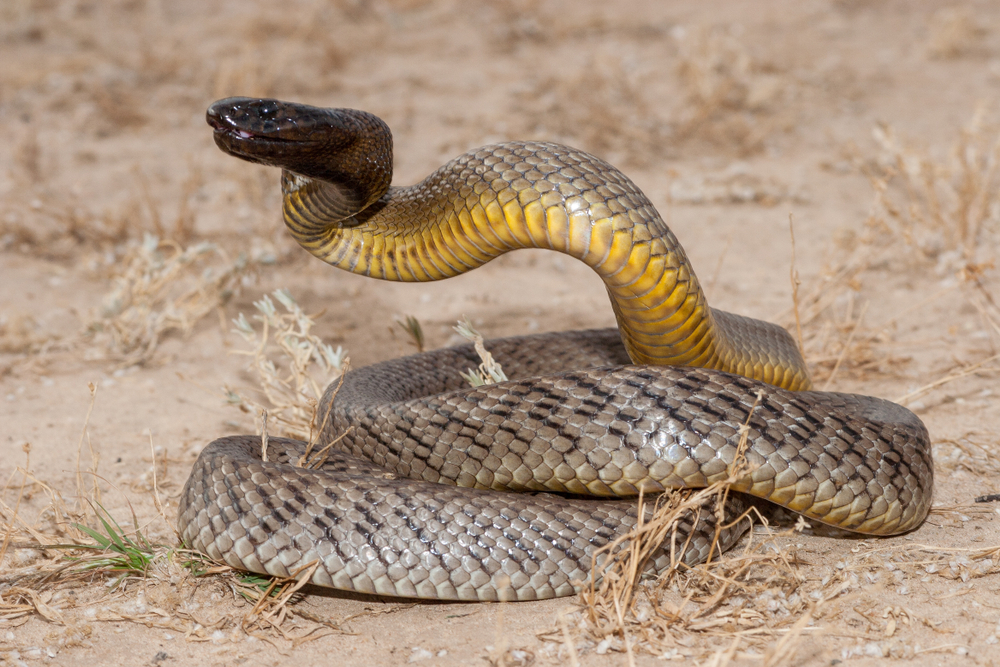
The inland taipan, also known as the “fierce snake,” is widely regarded as the most venomous snake in the world. Native to the arid regions of central Australia, this snake’s venom is estimated to be 50 times more potent than that of the king cobra. Despite its lethal potential, the inland taipan is a reclusive species that rarely comes into contact with humans. Its primary diet consists of small mammals, which it hunts with precision and efficiency.
The inland taipan’s venom can cause paralysis and eventual death if left untreated, but antivenom is available and effective. This snake’s shy nature and remote habitat mean that bites are extremely rare, and there have been no recorded human fatalities. The inland taipan’s fearsome reputation is largely due to its venom’s potency rather than its behavior. Its quiet existence and lethal capabilities make it a creature that intrigues scientists and snake enthusiasts alike. The inland taipan epitomizes the idea that the most dangerous things in nature are often the ones we least expect to encounter.
11. The Peculiar Peacock Spider
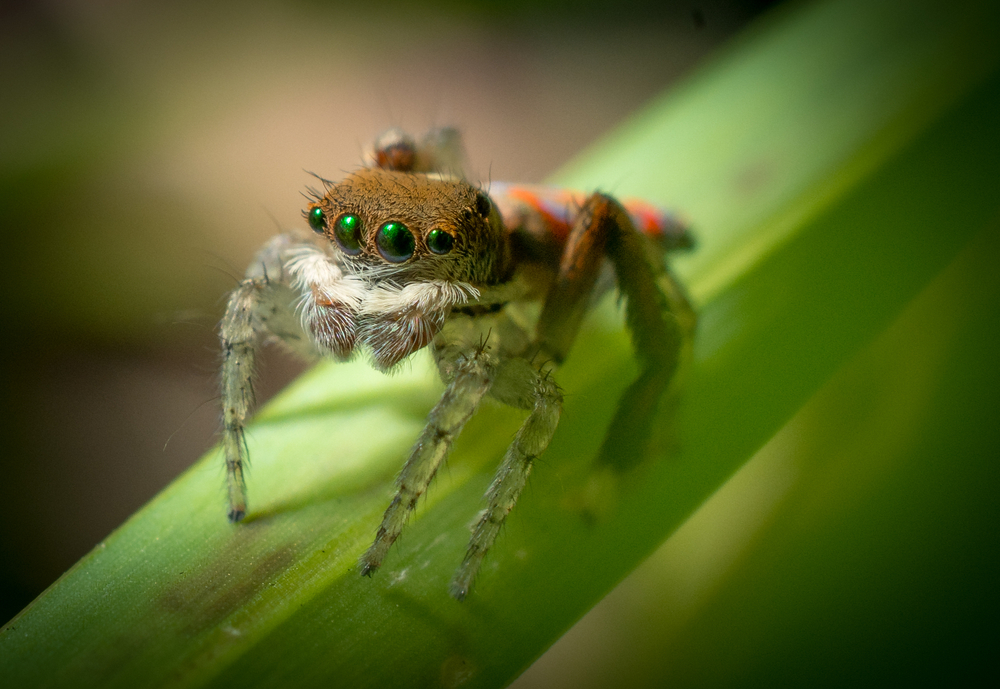
The peacock spider is a mesmerizing creature that captivates with its kaleidoscope of colors and intricate mating dance. These tiny spiders, found primarily in Australia, are known for the males’ flamboyant courtship displays. With vibrant, iridescent patterns on their abdomens, male peacock spiders perform elaborate dances to attract females, showcasing their vivid hues and agility. This whimsical performance has earned the peacock spider a reputation as one of nature’s most endearing creatures.
Despite their tiny size, peacock spiders are skilled hunters, preying on insects with precision and speed. Their visual acuity is remarkable, allowing them to detect and respond to movement with incredible accuracy. While they may appear harmless and charming, male peacock spiders must approach females cautiously, as the courtship dance can result in rejection or even cannibalism. The peacock spider’s blend of beauty and danger makes it a captivating subject for scientists and nature enthusiasts. Its unique appearance and behavior highlight the intricate and sometimes perilous dance of life in the natural world.
12. The Venomous Boomslang
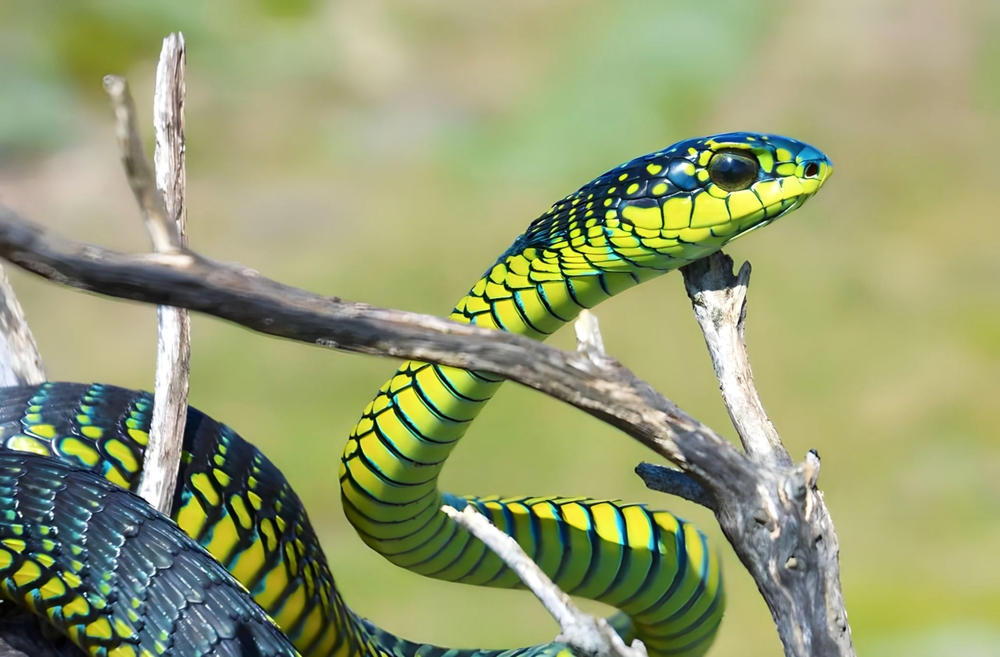
The boomslang is a slender, arboreal snake known for its potent hemotoxic venom and striking green coloration. Found throughout sub-Saharan Africa, this snake spends much of its life in trees, where it preys on birds, lizards, and small mammals. The boomslang’s venom causes severe hemorrhaging by preventing blood from clotting, making it one of the most dangerous snakes in its region. However, the boomslang is generally shy and will retreat if given the opportunity, resulting in few human encounters.
What sets the boomslang apart is its ability to inflate its neck to appear larger and more intimidating when threatened. This defensive display, combined with its vivid coloration, creates a striking image that commands attention. Despite its fearsome reputation, the boomslang plays an important role in controlling pest populations in its ecosystem. Its elusive nature and remarkable adaptations make it a fascinating subject for herpetologists and nature lovers. The boomslang embodies the duality of beauty and danger, reminding us that the natural world is both wondrous and unpredictable.
13. The Grim Reaper of the Tarantula World: The Brazilian Salmon Pink Bird-Eating Tarantula
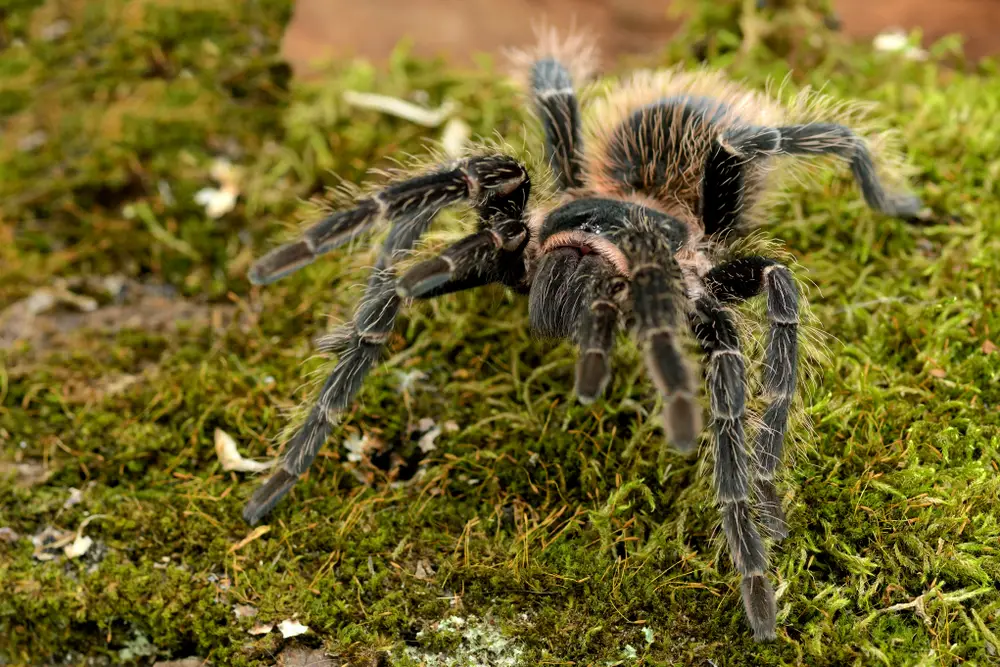
The Brazilian salmon pink bird-eating tarantula is a formidable arachnid known for its impressive size and striking coloration. Native to the rainforests of Brazil, this tarantula can reach a leg span of up to 11 inches, making it one of the largest spiders in the world. Its body is covered in reddish-pink hairs, giving it a distinct and somewhat menacing appearance. As its name suggests, this tarantula preys on a variety of creatures, including insects, small birds, and rodents.
Despite its intimidating size, the Brazilian salmon pink bird-eating tarantula is relatively docile and rarely poses a threat to humans. Its venom is not considered dangerous, and it will typically retreat when confronted. This tarantula’s sheer size and vivid coloration make it a popular choice among exotic pet enthusiasts and arachnid aficionados. Its presence in the wild is a reminder of the diversity and wonder of the rainforest ecosystem. The Brazilian salmon pink bird-eating tarantula is a testament to the majesty and complexity of the natural world, proving that the most fearsome creatures can also be the most captivating.
14. The Haunting Hognose Snake

The hognose snake is a master of deception, capable of feigning death to avoid predators and threats. Found throughout North America, this snake is known for its distinctive upturned snout, which it uses to burrow in sandy soils. When threatened, the hognose snake will first flatten its neck and hiss loudly as a warning. If this display fails to deter a predator, it will resort to playing dead, rolling onto its back and emitting a foul odor to mimic decay.
Despite its theatrical behavior, the hognose snake is harmless to humans and poses no real threat. Its diet consists primarily of amphibians, which it subdues with its mildly venomous saliva. The hognose snake’s ability to adapt its behavior to avoid danger is a fascinating example of survival strategy in the animal kingdom. Its dramatic antics and unique appearance make it a favorite among reptile enthusiasts and nature observers. The hognose snake is a reminder that sometimes the most effective defense mechanisms are those that involve trickery and illusion.
15. The Dread-Inducing Redback Spider
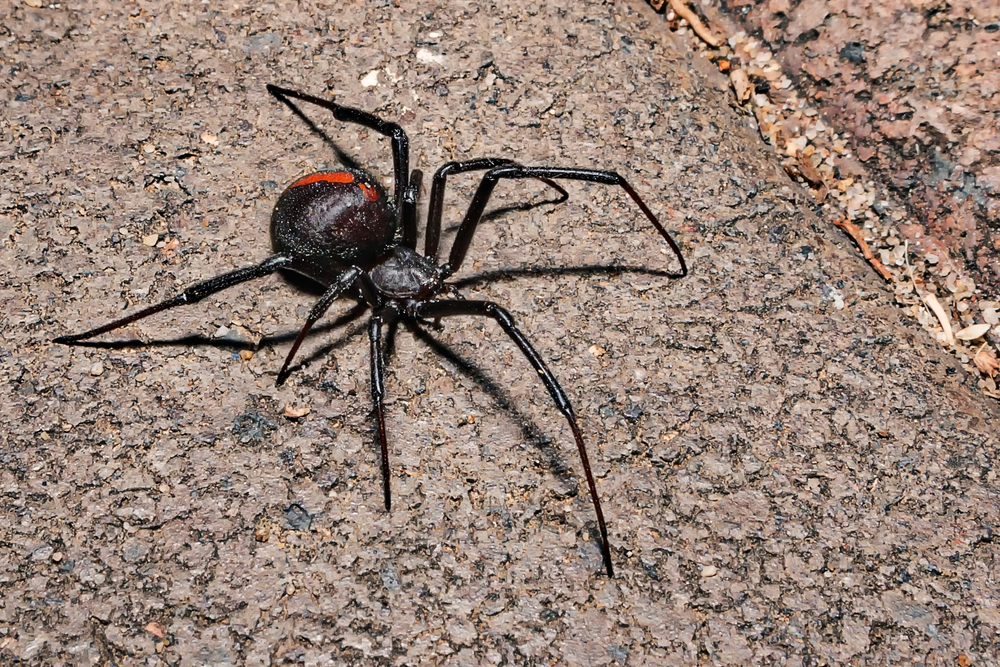
The redback spider, with its iconic red stripe and potent venom, is a notorious fixture in Australian folklore. Closely related to the infamous black widow, the redback is found throughout Australia, often in urban areas where it builds its webs in sheltered locations. The female redback is the more dangerous of the species, with venom that can cause severe pain, nausea, and in rare cases, death. However, antivenom is available and has greatly reduced fatalities from redback bites.
The redback’s appearance is deceptively charming, with its glossy black body and striking red marking. Its web is often a chaotic tangle of silk, designed to trap unsuspecting insects and small animals. Despite its fearsome reputation, the redback spider is an important part of the ecosystem, helping to control pest populations. Its presence in urban areas can be unsettling, but it is a testament to the adaptability and resilience of this arachnid. The redback spider serves as a reminder that danger can often lurk in the most unexpected places, making it a fitting creature for the world of horror.
